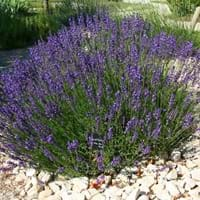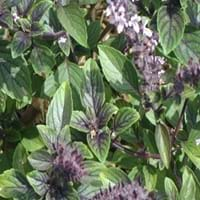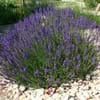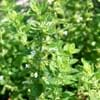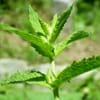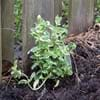Life Span
Perennial
Perennial
Origin
Western Europe, Mediterranean
Hybrid origin
Types
Melissa, Sachet
Not available
Habitat
Dry areas, Fields, meadows, Terrestrial
gardens, Grassland, Hillside, meadows
USDA Hardiness Zone
5-8
9-11
Sunset Zone
2a, 2b, 3a, 3b, 4, 5, 6, 7, 8, 9, 10, 11, 12, 13, 14, 15, 16, 17, 18, 19, 20, 21, 22, 23, 24
A1, A2, A3, H1, H2, 1a, 1b, 2a, 2b, 3a, 3b, 4, 5, 6, 7, 8, 9, 10, 11, 12, 13, 14, 15, 16, 17, 18, 19, 20, 21, 22, 23, 24
Habit
Clump-Forming
Oval or Rounded
Flower Color
White, Purple, Lavender, Blue Violet
Pink, Lavender
Flower Color Modifier
Bicolor
Bicolor
Fruit Color
Sandy Brown
Not Available
Leaf Color in Spring
Light Green, Gray Green
Purple
Leaf Color in Summer
Light Green, Gray Green
Green, Purple
Leaf Color in Fall
Light Green, Gray Green
Green, Purple
Leaf Color in Winter
Light Green
Light Green
Leaf Shape
Small narrow short
Ovate
Plant Season
Spring, Summer, Fall, Winter
Spring, Summer, Fall, Winter
Sunlight
Full Sun
Full Sun, Partial Sun
Type of Soil
Loam, Sand
Loam, Sand
The pH of Soil
Neutral, Alkaline
Neutral
Soil Drainage
Well drained
Well drained
Bloom Time
Late Spring, Early Summer, Summer
Indeterminate
Tolerances
Drought, Dry soil, Wet Site
Drought
Where to Plant?
Container, Ground, Pot
Ground
How to Plant?
Seedlings, Stem Planting
Stem Planting
Plant Maintenance
Medium
Medium
Watering Requirements
Do Not over Water, Never Over-water, occasional watering once established, Water occasionally, Water when top layer of soil becomes dry
Requires regular watering
In Summer
Ample Water
Lots of watering
In Spring
Less Watering
Moderate
In Winter
Less Watering
Average Water
Soil pH
Neutral, Alkaline
Neutral
Soil Type
Loam, Sand
Loam, Sand
Soil Drainage Capacity
Well drained
Well drained
Sun Exposure
Full Sun
Full Sun, Partial Sun
Pruning
Prune in late summer or fall, Prune twice a year, Remove damaged leaves, Remove hanging branches
Cut or pinch the stems, Do not prune during shooting season, Prune regularly, Prune to stimulate growth, Remove dead leaves, Remove dead or diseased plant parts, Remove deadheads
Fertilizers
All-Purpose Liquid Fertilizer, Nitrogen, slow-release fertilizers, Water soluble fertilizers
All-Purpose Liquid Fertilizer
Pests and Diseases
Beetles, Botrytis Blight, Phytophthora, Rhizoctonia crown rot
Red blotch
Plant Tolerance
Drought, Dry soil, Wet Site
Drought
Flower Petal Number
Single
Single
Fragrant Bark/Stem
Yes
Yes
Foliage Texture
Fine
Coarse
Foliage Sheen
Matte
Glossy
Allergy
Avoid during Pregnancy
no allergic reactions
Aesthetic Uses
Beautification, Landscape Designing, Showy Purposes
Not Used For Aesthetic Purpose
Beauty Benefits
Good for skin, Not Available
Not Available
Environmental Uses
Air purification, Food for insects, Prevent Soil Erosion
Air purification
Medicinal Uses
Antidepressant, Anxiety, Cancer, constipation, Cures constipation, Ear infections, Hair Loss, Itching, Lice, Menstrual Disorders, Migraines
constipation, Diarrhea, Headache, Kidney problems, Stomach pain
Part of Plant Used
Flowers, Leaves
Whole plant
Other Uses
Cosmetics, Decoration Purposes, Employed in herbal medicine, Showy Purposes, Used as Ornamental plant, Used for its medicinal properties
Used As Food, Used as Ornamental plant, Used for fragrance
Used As Indoor Plant
Yes
No
Used As Outdoor Plant
Yes
Yes
Garden Design
Container, Cutflower, Edging, Herb, Vegetable, Mixed Border, Rock Garden, Wall
Container, Edible, Herb / Vegetable, Mixed Border
Botanical Name
LAVANDULA angustifolia 'Vera'
OCIMUM 'African Blue'
Common Name
English Lavender
African Blue Basil, Hybrid Basil
In Hindi
अंग्रेजी लैवेंडर
अफ्रीकी ब्लू तुलसी
In German
Englisch Lavendel
African Blue Basilikum
In French
Lavande anglaise
Bleu basilic africaine
In Spanish
Inglés lavanda
Albahaca azul africana
In Greek
Αγγλικά Λεβάντα
Αφρικής Μπλε βασιλικό
In Portuguese
Inglês Lavender
Africano manjericão azul
In Polish
English Lavender
Afrykański Niebieski bazylią
In Latin
anglicus Lavender
अफ्रीकी ब्लू तुलसी
Phylum
Anthophyta
Not Available
Class
Dicotyledonae
Magnoliopsida
Family
Lamiaceae
Lamiaceae
Clade
Angiosperms, Asterids, Eudicots
Basal Tricolpates
Tribe
Lavanduleae
Not Available
Subfamily
Nepetoideae
Not Available
Number of Species
Not Available
Importance of English Lavender and African Blue Basil
Want to have the most appropriate plant for your garden? You might want to know the importance of English Lavender and African Blue Basil. Basically, these two plants vary in many aspects. Compare English Lavender and African Blue Basil as they differ in many characteristics such as their life, care, benefits, facts, etc. Every gardener must at least have the slightest clue about the plants he wants to plant in his garden. Compare their benefits, which differ in many ways like facts and uses. The medicinal use of English Lavender is Antidepressant, Anxiety, Cancer, constipation, Cures constipation, Ear infections, Hair Loss, Itching, Lice, Menstrual Disorders and Migraines whereas of African Blue Basil is constipation, Diarrhea, Headache, Kidney problems and Stomach pain. English Lavender has beauty benefits as follows: Good for skin and Not Available while African Blue Basil has beauty benefits as follows: Good for skin and Not Available.
Compare Facts of English Lavender vs African Blue Basil
How to choose the best garden plant for your garden depending upon its facts? Here garden plant comparison will help you to solve this query. Compare the facts of English Lavender vs African Blue Basil and know which one to choose. As garden plants have benefits and other uses, allergy is also a major drawback of plants for some people. Allergic reactions of English Lavender are Avoid during Pregnancy whereas of African Blue Basil have no allergic reactions respectively. Having a fruit bearing plant in your garden can be a plus point of your garden. English Lavender has no showy fruits and African Blue Basil has no showy fruits. Also English Lavender is flowering and African Blue Basil is not flowering . You can compare English Lavender and African Blue Basil facts and facts of other plants too.
